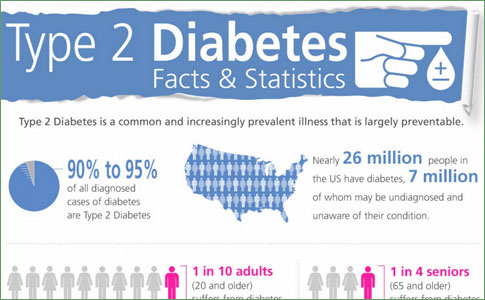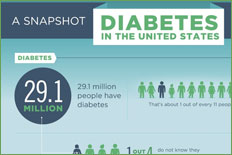Health Centers > Diabetes Center > Glucose Requirements of Infants and Children
Glucose Requirements of Infants and Children
The absolute rate of glucose production and use (umol·min-1) increases throughout childhood with the increase in body and brain mass. Up to an age of 6 to 8 years and a body weight of approximately 20 kg, there is a linear relation between absolute glucose use and body weight that extends to premature infants weighing less than 1000 g. After the age of 8 years, the rate of glucose use decreases, achieving an adult value of 11 to 13 umol·kg-1·min-1 (~2 mg·kg-1·min-1) by late adolescence. Glucose use by the brain is as much as 20 times greater than that of nonbrain tissue.
Hypoglycemia
Introduction
Physiology
Pathophysiology
L Clinical Manifestations
Causes
Clinical and Laboratory Diagnosis
Treatment
L Fasting Hypoglycemia
When to Refer
Bibliography
The larger brain to body weight ratio of children results in glucose flux rates (production and use) on a body weight basis that are three times higher in a young child than in an adult.
In the postabsorptive state (4 to 14 hours of fast), the flux rate of glucose in children (younger than 8 years) is approximately 35 umol·kg-1·min-1 (6 mg·kg-1·min-1) compared with 13 umol·kg-1·min-1 (2 mg·kg-1·min-1) for adults. After a 30-hour fast, glucose flux decreases to 9 to 10 umol·kg-1·min-1 (1.8 mg·kg-1·min-1) and 23 umol·kg-1·min-1 (4.1 mg·kg-1·min-1) for adults and children, respectively.
Requirements for Maintenance of Glucose Homeostasis
Hypoglycemia of Infancy and Childhood
Normal Glucose Homeostasis
Glucose Requirements of Infants and Children
Hepatic Glycogenolysis and Gluconeogenesis
Hypoglycemic Syndromes
L Introduction
L Neonatal Hypoglycemia
Hypoglycemia of Infancy and Childhood
Diagnostic Evaluation of Hypoglycemia
Maintenance of plasma concentration of glucose in the normal range regardless of age depends on (1) a normal endocrine system for integrating and modulating substrate mobilization, interconversion, and use, (2) functionally intact enzymes for glycogenolysis, gluconeogenesis, and use of other metabolic fuels, and (3) an adequate supply of endogenous fat, glycogen, and potential gluconeogenic substrates (amino acids, glycerol, and lactate). Although differences between men and women in glucose response to fasting have been identified, adults can maintain a nearly normal blood concentration of glucose, even when totally deprived of calories for days or, in the case of obese persons, weeks.
In contrast, healthy neonates and young children are less able to meet the obligatory demands for glucose and have a progressive decrease in plasma glucose concentration to hypoglycemic values after even short fasts (24 to 48 hours).
During overnight fasting, 50 to 60% of plasma glucose is derived from hepatic glycogen, whereas with prolonged fasting, gluconeogenesis becomes the main source of glucose production. Little is known about the dynamic and quantitative aspects of glucose production from glycogenolysis or gluconeogenesis or the factors affecting use of glucose by normal infants or children who have fasted. It is clear, however, that there is a more precarious balance between obligatory glucose requirements and ability to maintain an adequate supply of glucose during caloric deprivation.
The Hypoglycemic States
Spontaneous hypoglycemia in adults is of two principal types: fasting and postprandial. Symptoms begin ...
If glycogenolysis were the only source of glucose production, the hepatic glycogen content of healthy children would be sufficient to meet the glucose demands for no more than 5 to 10 hours. During a fast, the contribution from glycogenolysis decreases gradually and that from gluconeogenesis increases. For healthy children who have fasted overnight, gluconeogenesis accounts for about 50% of glucose production. After 24 to 36 hours of fasting, a young child is most likely totally dependent on gluconeogenesis as the primary source of endogenous plasma glucose.
THE HYPOGLYCEMIC STATES
Introduction
Differential Diagnosis
Hypoglycemia due to Pancreatic B cell tumors
L Introduction
L General Considerations
L Clinical Findings
L Treatment
L Prognosis
Persistent Islet Hyperplasia
Hypoglycemia Due to Extrapancreatic Tumors
Postprandial Hypoglycemia (Reactive Hypoglycemia)
L Postgastrectomy Alimentary Hypoglycemia
L Functional Alimentary Hypoglycemia
L Late Hypoglycemia (Occult Diabetes)
Alcohol-Related Hypoglycemia
L Fasting Hypoglycemia after Ethanol
L Postethanol Reactive Hypoglycemia
Factitious Hypoglycemia
Immunopathologic Hypoglycemia
Drug-Induced Hypoglycemia
This is reflected clinically by a blunted or absent glycemic response to exogenous glucagon under these fasting conditions. A substantial percentage of the carbon for de novo glucose production after prolonged fasting in adults is derived from amino acids (glutamine and alanine) as a result of muscle proteolysis and from glycerol as a result of lipolysis. Because the mass of muscle relative to that of the entire body is smaller in newborns, infants, and young children than in adults, the ability to mobilize sufficient endogenous gluconeogenic substrate to maintain the higher rates of glucose production for a prolonged period of fast may be compromised.
The availability of endogenous stores of fatty acids for oxidative metabolism is of substantial importance in the maintenance of glucose homeostasis in infants and children. Free fatty acids are used by nearly every tissue of the body except brain. Although free fatty acids cannot be used, ketone bodies cross the blood-brain barrier and can supplant more than half of the glucose requirements of the brain in the fetus and neonate, as well as in adult animals. Conversely, defective oxidation of fatty acids by body tissues can result in a relative increase in the rates of glucose use.
The metabolic response to brief periods of fasting results in greater decreases in plasma concentration of glucose and increases in concentration of ketone bodies in children than in adults. This suggests that the relative increase in glucose requirements among children accelerates the adaptive mechanisms of fasting. As a result, abnormalities in modulation of mobilization, interconversion, and use of substrates among children frequently are accompanied by hypoglycemia.
Plasma concentrations of glucose and β-hydroxybutyrate for men and women during 84 hours of fasting and for prepubertal children during a 30-hour fast. Zero time of the fast was 1800 hours, 1 hour after the last meal. All data are expressed as mean ± SE. SOURCE: (Haymond MW: Hypoglycemia in infants and children. Endocrinol Metab Clin North Am 18:211-252, 1989, with permission.)


